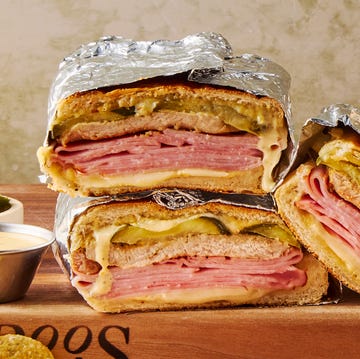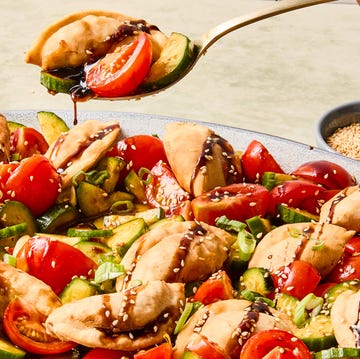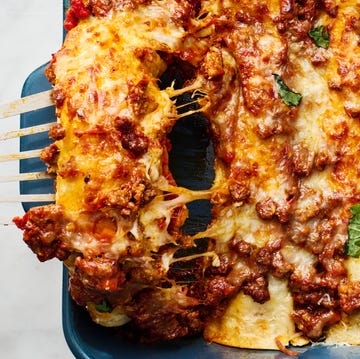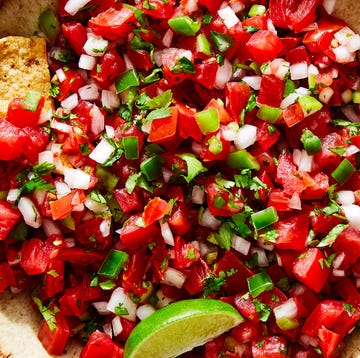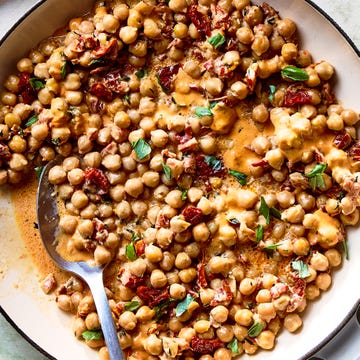There’s one pantry powerhouse that the others just can’t touch. You can use it to whip up sweet and savory foods, clean every surface in your house, destroy odors in the air, whiten your teeth, and even exfoliate your skin. Yes, we're talking about the all-powerful baking soda.
Given its incredible versatility, it’s no surprise that baking soda has even more culinary uses than you might realize—and I’m not talking about deodorizing your fridge or leavening your cakes. Here are all of the ways the magic of baking soda can elevate your cooking.
Tenderize Tough Meat
Don’t waste your days pounding tough cuts of steak. Toss that meat in baking soda instead, and miracles will happen in just 15 minutes. Baking soda raises the PH level on the surface of the meat, inhibiting the proteins from binding together. This will help retain moisture and encouraging the surface to brown, resulting in a juicy, tender bite.
A quick toss in baking soda is ideal for tough cuts like London broil or flank steak, but it also works for thinly sliced and ground beef. So long, dried-out taco meat! Sprinkling the meat all over with a ½ teaspoon of baking soda mixed with 2 teaspoons of water per pound of meat does the trick. Season the meat and cook as you typically would.
Caramelize Onions
Waiting for onions to soften, break down, and release their sugar is a labor of love, but baking soda can cut that cooking time in half. Just like with meat, baking soda raises the PH of the onions, making them more alkaline, speeding up the Maillard reaction (a series of chemical reactions that happen when amino acids and reducing sugars are heated), and encouraging quicker browning.
You only need a tiny amount to get the party started—about a 1/4 teaspoon per pound of onion. Sprinkle the onions with baking soda after you add them to the pan and continue to cook the onions until they completely break down and brown.
Soften Beans
Tough, undercooked beans are high on my cardinal sins list, but a sprinkle of baking soda will make those a thing of the past, yielding extra creamy beans for soups, stews, skillets, and dips. Adding a little bit of baking soda to the water in which your dry bean are soaking—or while your beans cook—will increase the pH of the water and disintegrate the pectin (a substance found in cell walls), allowing beans to soften quicker. As the beans break down, they become super tender and creamy. A little goes a long way! Add about 1/4 teaspoon of baking soda per cup of water.
Balance The Acidity Of Tomatoes
If you notice that your tomato sauce is a little too acidic, baking soda can swoop in to save the day—and your chicken parm. Just add 1/4 teaspoon of baking soda to your pot. Be careful not to go overboard, as Delish editor Taylor Ann Spencer points out in her acidic tomato sauce deep dive. If you add too much baking soda, the sauce will turn bitter.
Add Crispiness To Your Fried Favorites
There’s no point in frying anything if you don’t get that shatteringly crispy crunch in every bite. Baking soda added to flour dredge or batter will react with acidic ingredients (like eggs or buttermilk) and produce carbon dioxide bubbles, which create air and texture in the batter, resulting in a crisp and airy crust when fried. Add 1/2 teaspoon to your dry mix like we did in this waffle batter fried chicken recipe.
Baking powder does something similar, but in two stages, since baking powder is double-acting. That means that the baking powder will react and create air bubbles when it is exposed to liquid during the mixing process and again when it is exposed to heat during the cooking process. This process promotes additional leavening, yielding a texture that stays crispy even after frying. Add 1 teaspoon where you'd use 1/2 teaspoon of baking soda.


